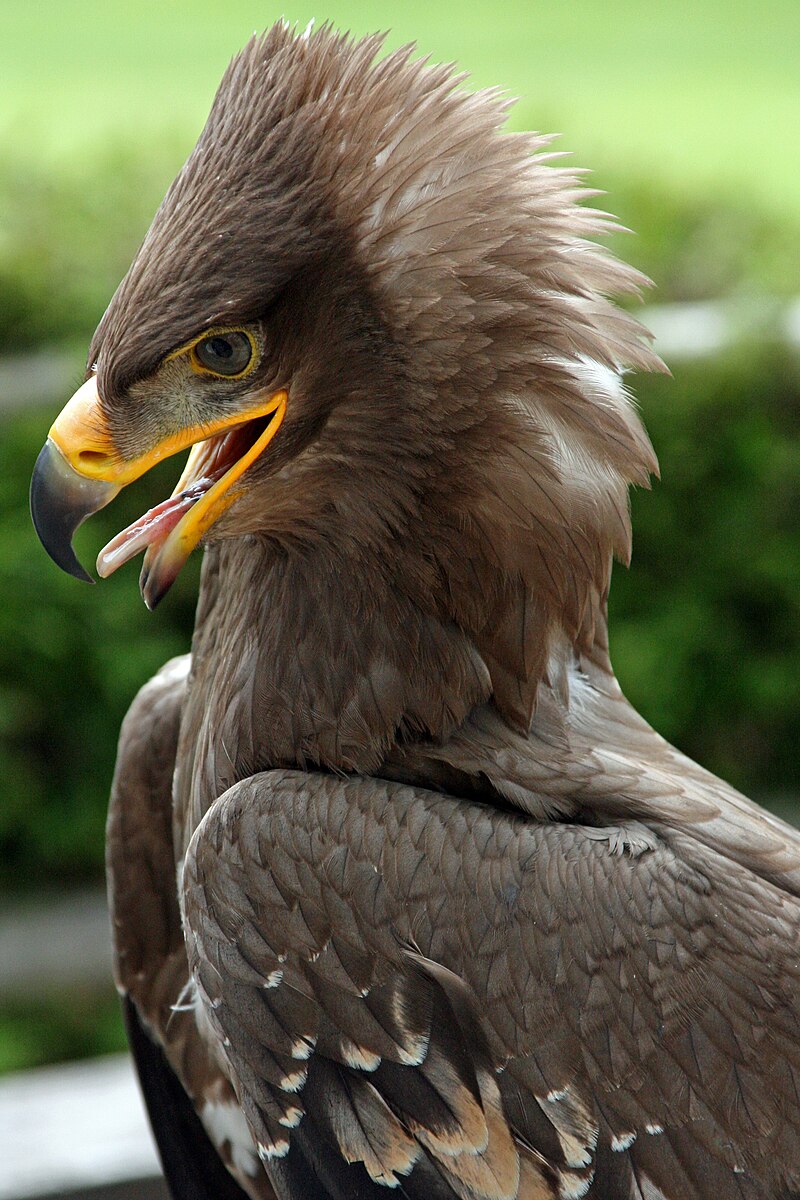Steppe Eagles are large eagle species known for their migratory behavior, traveling over long distances to spend the winter in Africa south of the Sahara. These majestic birds have a unique flight pattern and are often seen in groups during their migration and at non-breeding times.
Steppe Eagles’ Migration Patterns
Steppe Eagles are migratory birds, and their migration patterns are closely tied to the changing seasons. Here’s a closer look at when these eagles take flight:
Spring Migration
- Steppe Eagles begin their northward migration from their wintering grounds in Africa in early spring, typically between February and April.
- They follow a well-established route, often using the same stopover sites year after year.
- The migration can take several weeks, with the eagles covering hundreds of kilometers each day.
- Steppe Eagles are known to fly at high altitudes, sometimes reaching up to 1,600 meters (5,200 feet) above the ground.
Autumn Migration
- In the fall, Steppe Eagles begin their southward migration to their wintering grounds in Africa.
- The autumn migration typically takes place between September and November.
- During this time, the eagles can be seen in large groups, taking advantage of thermal currents and wind patterns to conserve energy.
- The journey to their wintering grounds can take several weeks, with the eagles covering vast distances.
Unique Flight Patterns of Steppe Eagles
 Image source: Steppe Eagle by Fimb
Image source: Steppe Eagle by Fimb
Steppe Eagles are known for their distinctive flight patterns, which set them apart from other eagle species. Here are some key characteristics of their flight:
Slow, Deep Wing Beats
- Steppe Eagles have a heavier flight pattern compared to other eagles, with slow, deep wing beats.
- This flight style allows them to conserve energy and soar efficiently over long distances.
Adaptation to Wind and Thermal Conditions
- Steppe Eagles have been observed to adjust their flight patterns based on wind and thermal conditions.
- They can increase their gliding airspeed under strong thermal convections or opposing winds, making the most of the available air currents.
High-Altitude Flight
- Steppe Eagles have been recorded flying at impressive altitudes, with some individuals reaching up to 1,600 meters (5,200 feet) above the ground.
- This high-altitude flight allows them to take advantage of stronger wind currents and thermal updrafts, further enhancing their energy-efficient migration.
Factors Affecting Steppe Eagles’ Migration
Several factors can influence the timing and patterns of Steppe Eagles’ migration, including:
Weather Conditions
- Favorable weather conditions, such as strong thermal currents and tailwinds, can help the eagles conserve energy and cover longer distances during their migration.
- Adverse weather, such as strong headwinds or storms, can slow down or even disrupt the migration.
Food Availability
- The availability of food, particularly small mammals, birds, reptiles, and insects, can affect the timing and routes of Steppe Eagles’ migration.
- The eagles may adjust their migration patterns to take advantage of seasonal food sources, such as swarming locusts and termites in their African wintering grounds.
Habitat Changes
- Habitat destruction and degradation, such as the loss of open landscapes and steppes, can impact the Steppe Eagles’ migration routes and stopover sites.
- These changes can force the eagles to adapt their migration patterns, potentially leading to longer or more challenging journeys.
Conservation Efforts for Steppe Eagles
Steppe Eagles are currently listed as Endangered by BirdLife International due to significant declines in their population. Conservation efforts are crucial to protect these magnificent birds and ensure their long-term survival. Some key conservation measures include:
- Habitat preservation and restoration: Protecting and restoring the open landscapes, grasslands, and steppes that Steppe Eagles rely on for nesting and foraging.
- Mitigation of power line threats: Implementing measures to reduce the risk of electrocution and collision with power lines, a major threat to Steppe Eagles.
- Monitoring and research: Ongoing monitoring of Steppe Eagle populations and research to better understand their migration patterns and habitat requirements.
- Awareness and education: Promoting public awareness and education about the importance of Steppe Eagles and the need for their conservation.
By understanding the unique migration patterns and flight characteristics of Steppe Eagles, we can better protect these remarkable birds and ensure their continued presence in the skies.
References:
– The Peregrine Fund – Steppe Eagle
– Russian Raptor Research and Conservation Network – Steppe Eagle
– European Raptors – Steppe Eagle
– Wikipedia – Steppe Eagle

